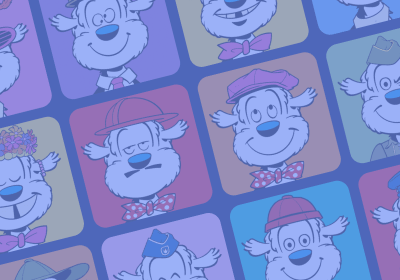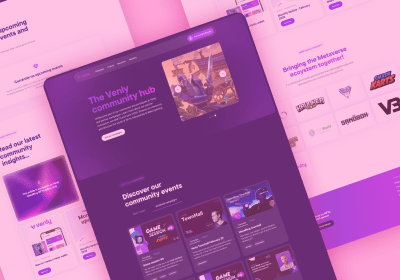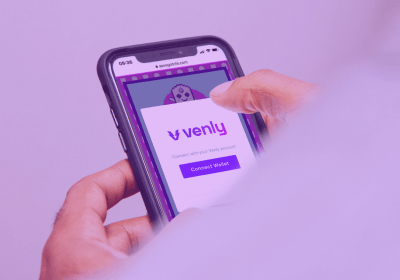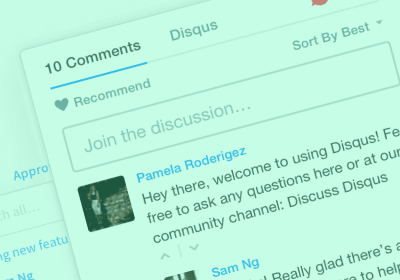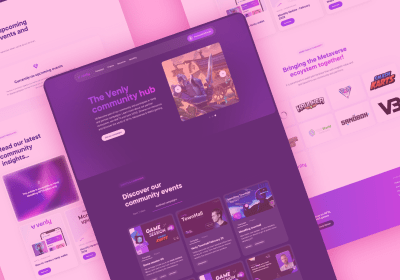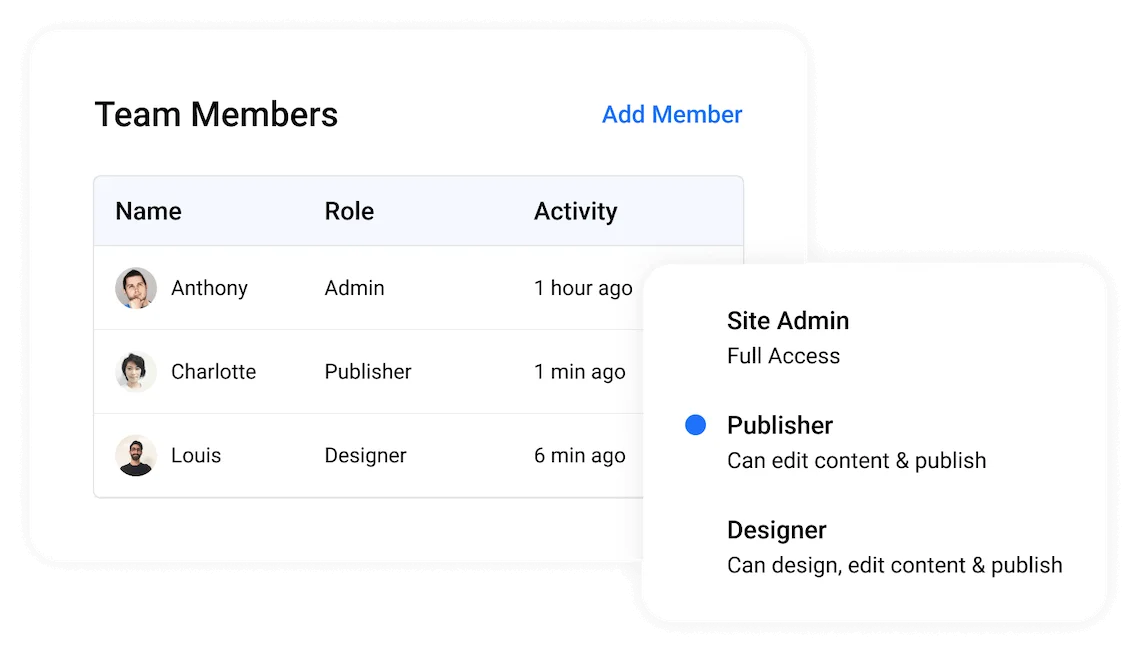The web has unfolded a whole new era of collaborative web design work right before our eyes. Remote, cloud-based work is the norm for teams around the globe. Web technologies now reshape our modern workscape. More team projects migrate to the collaborative cloud. But for web development this is nothing new; it’s only the tip of the iceberg. Juggling countless details, moving parts, diverse talent, and layered phases are just a normal day in website projects. Web design agencies now must improve their team’s creative processes even more, to push ahead of the crowd.
Collaborative web design is the way for agency teams to perform better together. It takes place using a shared, cloud-hosted design system toolstack. It promotes an organized dynamic for speedier project outputs, defined feedback loops, and more positive client outcomes. Here’s why smart agencies should adopt a collaborative web design framework pronto, evolving their design processes to stay competitive.
Top Agency Web Design Is Now A Commodity
To be a successful web agency player, great design isn’t enough anymore. You could have brilliant design, but if you can’t get it out in time, it loses much value. Whether we like or not, professional web design has become a very competitive market commodity. So how else can web agencies compete today?
The answer is time. Time is that one, great equalizer. All else being equal, in a saturated and competitive market, time savings is the way to web design success. With entry barriers lowered, tech democratization has pushed web agency margins slimmer. The key differentiator for agencies is great web design work… delivered faster. Collaborative web design reorganizes team processes for speed, and uses shared, dedicated systems and tools. It boosts teams from working in slower silos and dams, to working in streamlined bridges and highways.
Brands Still Need Top Creative Services
The truth is, small or growing businesses still need professional web creatives 9 times out of 10. DIY site builders like WIX and Squarespace fill about 10% of the solopreneur and startup web design needs of the market. The other 90% of complex website design projects are still entrusted to professionals and web agencies. These industry players provide big-picture project work encompassing holistic brand standards and ad channel continuity.
Going up one step, even solo web design platforms used by individual developers and designers can’t competently handle larger project scopes. These types of complex, strategic projects require a more intensive co-creation, achieved only in highly organized and coordinated collaborative web teams.
Most clients who want a website also need their entire brand image constructed online. They seek a wide-angle brand conversation spanning their online and offline marketing assets. Their web design needs form part of a larger brand image strategy.
This is a large-scope task only agency design teams can take on to deliver timely, coherent website branding results. Full-stack web agencies can handle additional services complementary to core web design and development work. Agency clients expect these value-added services reaching across digital marketing, search engine optimization, targeted copywriting, and online advertising. To gracefully handle these complex project needs, web agencies now need to adopt new, collaborative workflows. They need to be able to better deliver these types of complex client web design teamwork projects faster and on target.
Creative Genius Starts With A Great Process
It’s process over product: you’re more likely to produce better ideas (and faster) if you perfect your teamwork rhythm first. It’s something many brilliant creative web agencies have continually struggled with, but it can also mean the difference between a happy or a frustrated client.
The idea is to set up a clear and optimized creative process that avoids those typical slowdowns and bottlenecks so often inherent in human teamwork. Inside of the four main groups working as a web design team, you will find project management, design, content, and code. These four groups also need one additional process overlay, to help minimize production slowdowns in the group interactions. The three added main steps in this process overlay go along with the project management group. Inside of project management, they include preparation, creation, and feedback.
When this three-step PM process is added into a collaborative workflow inside a structured, no-code design system, it eliminates needless friction causing production slowdowns. It enables that clear and focused closed-loop feedback process that boosts great creativity and faster outcomes. It also brings the client closer to the process, making them feel like a part of the creative team, and giving the team a much better idea of the client’s goals too. This optimized flow is the collaborative web design process that streamlines the entire team’s work in between skill groups, and boosts agency competence as a result.
The No-Code Engine Powers Collaborative Web Design
No-code and low-code design is the latest technology trend powering web utility from coders down to users. These coding principles power the shared toolsets in design systems, which promote a team’s collaborative web design. The no-code principles, organized as snippets, are the underlying complex code that create simpler, higher-level functional pieces for project use inside a design system library. They power the fluid, collaborative web design work among teams using shared, scalable design system libraries. These coded, modular visual interface functions can then be used and understood in any stage of the process, by anyone on the project team.
No-code and low-code are like the master translators on a web design team, turning hard web code language into visual bits and pieces to be reused and repurposed very easily. They simplify the complexities of all that backend coding language into a usable and translatable format for all on the team, including the client’s eyes.
No-code and low-code is the technology enabling collaborative work to take place smoothly inside design systems as collaborative web design. No-code creates the relevant, visual user experience interface toolset that each group needs as part of the larger web design team.
As the basis of scalable, shared web design systems, no-code simplifies the complex underlying structure of a website into understandable work tools for non-coders’ use. It bridges a design system toolstack integration and automation functions. It levels team knowledge and allows people to speak a common, code-based web project language across departments, helping lower the communication walls further between developers and designers.
Scalable Design Systems Use Collaborative Web Design
For that 90% of the professional website market with complex web brand design needs, agencies now organize and optimize their team processes as intuitive and collaborative web design flows inside of shared design systems. These design systems are integrated no-code, web tech toolstack structures that enable those optimized collaborative work processes to take place.
Design systems are built on no-code components to be scalable libraries of shared, reusable web designs. They are the cloud-based workflow structures that now seamlessly bring together project teams to collaborate swiftly and smoothly. Everyone is accessing the same project components, working with confidence in the project designs, adding their input at the right stages, and avoiding any wasteful, redundant or confusing project design work.
Using this no-code design system, each team member in an agency group is plugged-in and focused on their specific work contribution inside of their timed, predefined work process. Project management adds client requests and internal communication to their list while tracking the next milestones. Meanwhile, coders are developing changes for updated components in the UI library. Designers can create graphics in their separate tools without modifying that UI code library. Copywriters in turn are drafting their content topics into their document views for editorial ease and version control.
The entire process moves along a collaborative, managed timeline, with shared milestones, review points, and native design libraries. Everyone works inside their toolset views, using efficient closed-loop review processes to move creative work along at warp speeds. It’s collaborative web design at work, using design systems, in successful teams and agencies.
Design systems address the need for teams to work faster and grow by sharing online design libraries. They provide the key framework for doing great-quality teamwork using collaborative web design work processes.
Want to start building No-Code?
Wondering whether SiteManager would be a fit for your team? Contact us and we will guide you around!
